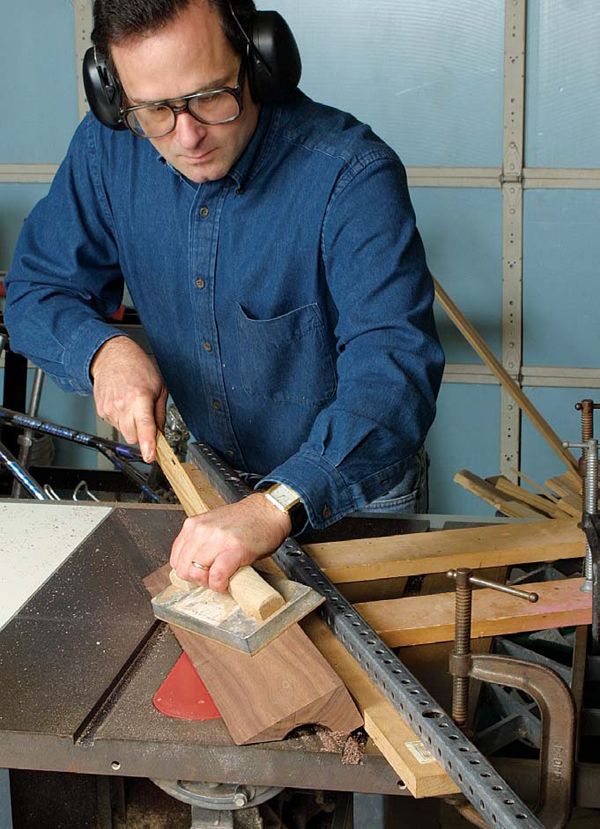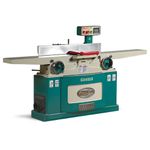Cutting Coves on the Tablesaw
Safe, accurate methods for making your own molding
Synopsis: This article brings professional furniture making home to woodworkers not outfitted with fancy industrial machines; the author describes how to make an infinite variety of coves using a tablesaw. A shopmade parallelogram sets up symmetrical coves, and Stuart Sabol details how tilting the sawblade helps achieve asymmetrical coves. Along with safety tips, he offers tips on extending various miter gauges and explains how prudence benefits the finished product. He’s even created a computer spreadsheet to simplify the process of determining the best blade-tilt and fence angles.
From Fine Woodworking #168
Coves often are used as a decorative element in the design of furniture and architectural moldings. Whether in the feet of a chest, in a transition section between upper and lower cases, or in crown molding, coves create delicate shadow lines that accent and enhance a workpiece.
There are two broad categories of coves: symmetrical and asymmetrical. A symmetrical cove has its apex (highest point) in the center. The apex of an asymmetrical cove is offset from the center.
Large professional shops cut coves on a shaper, but few amateurs can justify the expense of one of these industrial machines. The alternative method is to cut coves on a tablesaw; no expensive attachments are needed, and an infinite variety of coves is possible. The drawback, however, is that it can be difficult to set up the tablesaw to cut coves to precise shapes.
I use two methods that simplify the tablesaw setup: The first involves the use of a simple shopmade parallelogram for cutting symmetrical coves; the second uses a computer spreadsheet program to establish the correct angles when cutting the more complicated asymmetrical coves.
A cove has two defining dimensions: the depth of the cut that equals the height of the blade above the table, and the width of the cove measured at its base. These two dimensions are varied by adjusting the height of the sawblade and by varying the angle at which the workpiece approaches the sawblade. Make a scaled drawing of the design or use a scaled plan, and measure the depth of the cove and the width at the base.
Use a shopmade parallelogram to set up the cuts. The parallelogram makes it easy to determine the fence angle for a symmetrical cove. The parallelogram is roughly 1 ft. by 2 ft. and is made from any straight-edged scraps of wood. Join the pieces with machine screws and wing nuts, and countersink the heads of the screws so that the parallelogram can lie flat on the saw table.
Raise the sawblade to match the depth of the cove. Measure the width of the cove and set the inside gap between the long sides of the parallelogram to match it. Lay the parallelogram on the tablesaw so that it straddles the blade. Rotate the parallelogram until the front tooth of the saw is just touching the front of the parallelogram and the back tooth is just touching the back. Mark the front inside edge of the parallelogram. Set the miter gauge to this angle and use it to determine the angle of the fence.
For the full article, download the PDF below.
Fine Woodworking Recommended Products

Grizzly G0495X Industrial Helical Cutterhead 8-in. Jointer

Stanley Powerlock 16-ft. tape measure

Ridgid EB4424 Oscillating Spindle/Belt Sander





















Log in or create an account to post a comment.
Sign up Log in